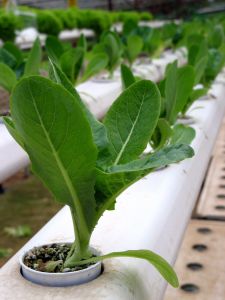Protect Your Veggies from the Cold: Build an Indoor Vegetable Garden
*******
The idea of making your own indoor vegetable garden or greenhouse probably sounds tricky, but just about anyone can do it. And if you’re worried about it being expensive – don’t! Chances are you’ve already have a lot of the material you need just lying around your house. Even if you don’t, the cost is still pretty low.
So, how do you do it? Well, first you need to figure out a space and measure to see how big it’s going to be. You’ll need the greenhouse to be close to an electrical outlet, too, and it’s better if the area is already fairly warm.
One of the best places for an indoor greenhouse is your attic because you won’t have to worry about all the foot traffic and attics tend to stay warmer than the rest of the house.
Here’s what you’ll need to Build an Indoor Greenhouse:
- Plastic sheeting (alternatively, waterproof boards that have been sealed)
- Wire shelves made of plastic or metal
- 1 wooden board that fits across the shelves (alternatively, you can use duct tape)
- A shop light with a full spectrum grow bulb
- 1 automatic timer
- 2 portable fans
- 1 power strip
- Scissors or a box cutter
* Assemble the Shelves
The first thing to do is to put those shelves together. This should be relatively simple and only take you a few minutes if you use store-bought shelves, but make sure you follow instructions because they can vary from manufacturer to manufacturer.
* Add a Grow Bulb and/or Lighting
Once the shelves are ready, take your shop light and put in a full spectrum grow bulb. Next, place the wooden board across the top shelf and attach the shop light to it facing down. This is how your veggies are going to get the light they need to grow.
If you have difficulty attaching the board and light in this manner or would prefer to do without the board altogether, there is an alternate way. You can get under-cabinet lights, and then take duct tape and use it to stick the lights below the bottom shelf so that the light shines upward.
Because an indoor greenhouse isn’t like having one out in the sun, you might find that you need to play around a bit with how many shop lights you need and how long the lights should be on. Larger greenhouses, obviously, are likely to require more light. It’s something that you’ll only learn with some trial and error.
* Add an Automatic Timer
Whether you have one light or 20, and put them on the top or bottom, make sure to plug the lights into an automatic timer so that you don’t have to bother with turning them on at specific times yourself. It’s totally worth the $10-$30 you’ll pay at your local Lowe’s or Home Depot.
* Add a Portable Fan for Air Circulation
Next, place a portable fan or two inside the greenhouse area to make sure that the air circulates for the plants. Then, cover the whole thing in plastic sheeting so that the temperature and humidity levels inside will stay the same. Use your scissors or box cutter to make a flap so that you can easily access the plants.
* Protect Area Around and Below
Finally, regardless of where you put your indoor greenhouse, you’re going to want to make sure that the area beneath and around it is protected from moisture. One way to do this is by using plastic sheeting both to cover the bottom of the greenhouse and possibly even spread over the surrounding area. Another way is to use waterproof boards for the “floor” of the garden and then apply sealant to them for extra protection.
And that’s it! Go out and get some seeds, soil, and pots and you’re ready to grow no matter what the weather.
*******
— Lindsay Parrich’s experience in the home & gardening industry has allowed her expertly write about many topics within the field. When she’s not writing, you can find her reviewing products or training for her first triathlon.
For more on Gardening, please see our Gardening category, including How to Make a New Plant. For more on Building an Indoor Greenhouse, here’s an article from True Value – How to Build a Simple Indoor Greenhouse. Cheers. ~jb
Images via Lindsay Parrich || source unknown








I have to leave a word of caution here – putting this in an attic is probably the worst thing you can do (especially in northern climates)
The heat & humidity generated (which can be quite a lot) can cause mold & mildew growth along with ice dams. Putting it inside the house can also lead to the same problems (along with condensation on the windows leading to rot) so make sure you have a way of controlling that humidity.
One other small item, as there are others that love to grow certain items the same way… you may wish to inform the police that you are growing heirloom tomotos or whatever the case may be. Yes many departments use infrared & other means to find grow houses.
You have mentioned very good points when it comes indoor vegetable garden and specially how to start. I had recently setup greenhouse for tomatoes and bought the grow lights from Advanced Nutrients which gives perfect spectrum for growth and yes I just put up a fan which is needed for air circulation to protect from moisture.
This is a great idea for winter. This way you’ll still get all the veggies you need.